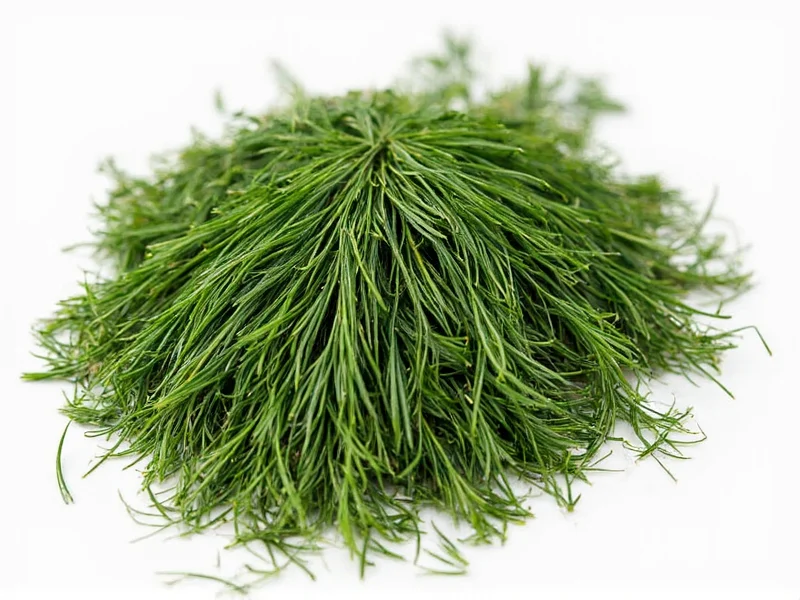The standard substitution ratio for dried dill to fresh dill is 1:3—meaning 1 teaspoon of dried dill equals 1 tablespoon of fresh dill. This conversion accounts for the concentrated flavor in dried herbs due to moisture removal during the drying process.
When your recipe calls for fresh dill but you only have dried dill on hand, understanding the proper substitution ratio prevents flavor imbalances in your dishes. Many home cooks make the mistake of using equal amounts, resulting in overpowering or bitter flavors that ruin otherwise perfect recipes.
Why the 1:3 Dried Dill Substitute Ratio Works
Fresh dill contains approximately 85-90% water, while dried dill has most moisture removed. This concentration means dried dill packs significantly more flavor compounds per volume. Using equal amounts would create an unbalanced dish with excessively strong anise-like notes.
Chef Maria Rodriguez, who has developed recipes for major culinary publications for 15 years, explains: “The drying process intensifies certain flavor compounds while diminishing others. Dried dill loses some of the bright, grassy notes of fresh dill but concentrates the earthier, more pungent elements.”
When to Use Dried Dill Instead of Fresh
Not all recipes tolerate substitutions equally. Understanding when to use dried dill as a fresh dill replacement prevents culinary disasters:
| Best for Substitution | Not Recommended for Substitution |
|---|---|
| Long-cooking dishes (stews, soups, braises) | Fresh salads and garnishes |
| Dips and spreads with extended chilling time | Ceviche and raw fish preparations |
| Baked goods and breads | Dill pickles (fresh dill essential for proper fermentation) |
| Dressings with vinegar bases | Fresh herb blends like fines herbes |
Adjusting Your Cooking Technique
Simply swapping measurements isn't enough for optimal results when using dried dill substitute for fresh. Consider these technique adjustments:
- Timing matters: Add dried dill earlier in the cooking process than fresh dill to allow time for rehydration and flavor distribution
- Rehydrate first: For cold dishes, mix dried dill with a small amount of warm water or vinegar 15 minutes before adding to your recipe
- Taste as you go: Dried dill's potency varies by brand and age—always adjust to taste after initial substitution
- Consider texture: Dried dill won't provide the same visual appeal as fresh sprigs for garnishing
Storage Tips for Maximum Flavor Preservation
Proper storage significantly impacts how well your dried dill substitutes for fresh. Ground dried dill loses potency faster than whole dill weed:
- Store in airtight containers away from light and heat
- Replace dried dill every 6-12 months for optimal flavor (vs. 2-3 years for many other dried herbs)
- Freeze dried dill in vacuum-sealed bags for up to 18 months
- Test potency by rubbing between fingers—strong aroma indicates good quality
Recipe-Specific Substitution Guidance
Different dishes require nuanced approaches when substituting dried dill for fresh:
Fish and Seafood Dishes
For baked or grilled fish, use 3/4 teaspoon dried dill per tablespoon of fresh called for. Add during the last 10 minutes of cooking to prevent bitterness. The dried dill substitute ratio works best when combined with lemon juice to brighten the flavor profile.
Dill Pickle Relish
When making relish, use a 1:2.5 ratio (1 teaspoon dried dill = 2.5 teaspoons fresh) since the vinegar environment intensifies dried herb flavors. Add dried dill during the simmering stage rather than at the end.
Tzatziki and Yogurt Dips
For cold yogurt-based dips, rehydrate dried dill in a tablespoon of warm water for 15 minutes before mixing. Use 1 teaspoon dried dill per 3 teaspoons fresh, then adjust to taste after chilling for 2 hours.
When Fresh Dill Is Irreplaceable
Some applications simply don't work with dried dill substitute. These include:
- Scandinavian gravlax preparation
- Fresh herb vinegars
- Delicate cucumber salads
- As a garnish for finished dishes
In these cases, consider alternative fresh herbs like tarragon or parsley rather than forcing a dried dill substitution that will compromise the dish's integrity.
Troubleshooting Common Substitution Mistakes
If you've accidentally used too much dried dill in your recipe, try these fixes:
- Dilute the dish with additional base ingredients (more yogurt for dips, more broth for soups)
- Balance with acid (lemon juice or vinegar) to cut through the intensity
- Add complementary flavors like honey or mustard to round out the profile
- For baked goods, increase other ingredients proportionally rather than adding more dill











 浙公网安备
33010002000092号
浙公网安备
33010002000092号 浙B2-20120091-4
浙B2-20120091-4